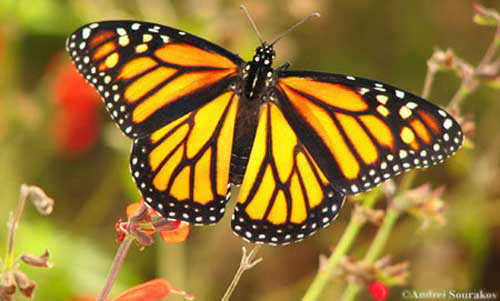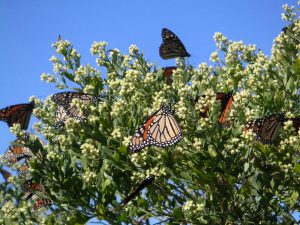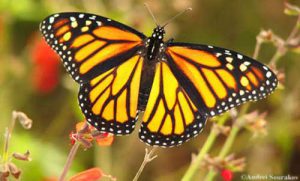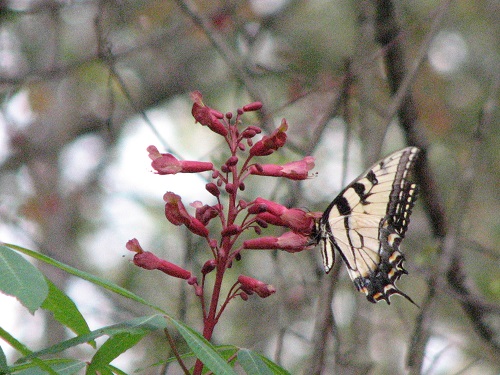
Monarch Migrations Have Begun
 Since we are approaching the peak dates in mid-October, it is time to get your gardens ready for migrating monarchs to fuel up on nectar sources. In their Mexican overwintering sites, these monarchs will have to survive on stored fat all winter. So they need to build up fat reserves by feeding on flowering plants along their migration route. Saltbush, Goldenrod, Narrowleaf Sunflower, Blanketflower and Milkweed are some of the nectar-rich blooms in the Florida Panhandle this time of year.
Since we are approaching the peak dates in mid-October, it is time to get your gardens ready for migrating monarchs to fuel up on nectar sources. In their Mexican overwintering sites, these monarchs will have to survive on stored fat all winter. So they need to build up fat reserves by feeding on flowering plants along their migration route. Saltbush, Goldenrod, Narrowleaf Sunflower, Blanketflower and Milkweed are some of the nectar-rich blooms in the Florida Panhandle this time of year.
Monarchs begin leaving the northern US and Canada in mid-August. They usually fly for 4-6 hours during the day, coming down from the skies to feed in the afternoon and then find roosting sites for the night. Warmth and nectar enable butterflies to gain the energy needed to keep on flying. Monarchs cannot fly unless their flight muscles reach 55ºF. On a sunny day, they bask by extending their wings to allow the black scales on their bodies to absorb heat. But on a cloudy day, they generally don’t fly if it is below 60ºF.
These graceful insects capitalize on the warm air they encounter when they head south. Thermals are columns of rising air, caused by uneven heating of the earth. They form wherever the air is just a few degrees warmer than the air next to it. Thermals often form wherever large patches of dark ground are adjacent to lighter-colored ground, such as over parking lots, above farm fields, highways, and next to rivers and lakes. Monarchs are so light that they can easily be lifted by the rising air.
But they are not weightless. In order to stay in the air, they must move forward while also staying within the thermal. They do this by moving in a circle. At that point, the monarch glides forward in a south/southwesterly direction with the aid of the wind. It glides until it finds another thermal, and rides that column of rising air upwards again. Monarchs can glide forward 3-4 feet for every foot they drop in altitude. If they have favorable tail winds, monarchs can flap their wings once every 20-30 feet and still maintain altitude.
When winds are from the south, monarchs fly very low, often choosing to land and find cover or refuel on available nectar sources. They may wait for the winds to change direction, and as a result, can form large roosts as they accumulate in a protected location.
The average pace of the migration is around 20-30 miles per day. But tag recoveries have shown that monarchs can fly 150 miles or more in a single day if conditions are favorable. Monarchs migrate during the day, coming down at night to gather together in clusters in a protected area. In the south, they might choose oak or pecan trees, especially if the trees are overhanging a stream channel.
Monarchs migrate alone—they do not travel in flocks like birds do. So they often descend from the sky in the afternoon to feed, and then search for an appropriate roosting site. Most roosts last only 1 or 2 nights, but some may last a few weeks.
How do monarchs find their way to Mexico? We really don’t know for certain. We do know that monarchs have a sun compass in their brain, and a circadian clock in their antennae. The clock and compass are integrated in the brain to form a time-compensated sun compass. Using the sun and polarized light waves, monarchs can maintain a general S/SW heading throughout the day. Even with that, it is amazing that they can find the exact spot year after year.

